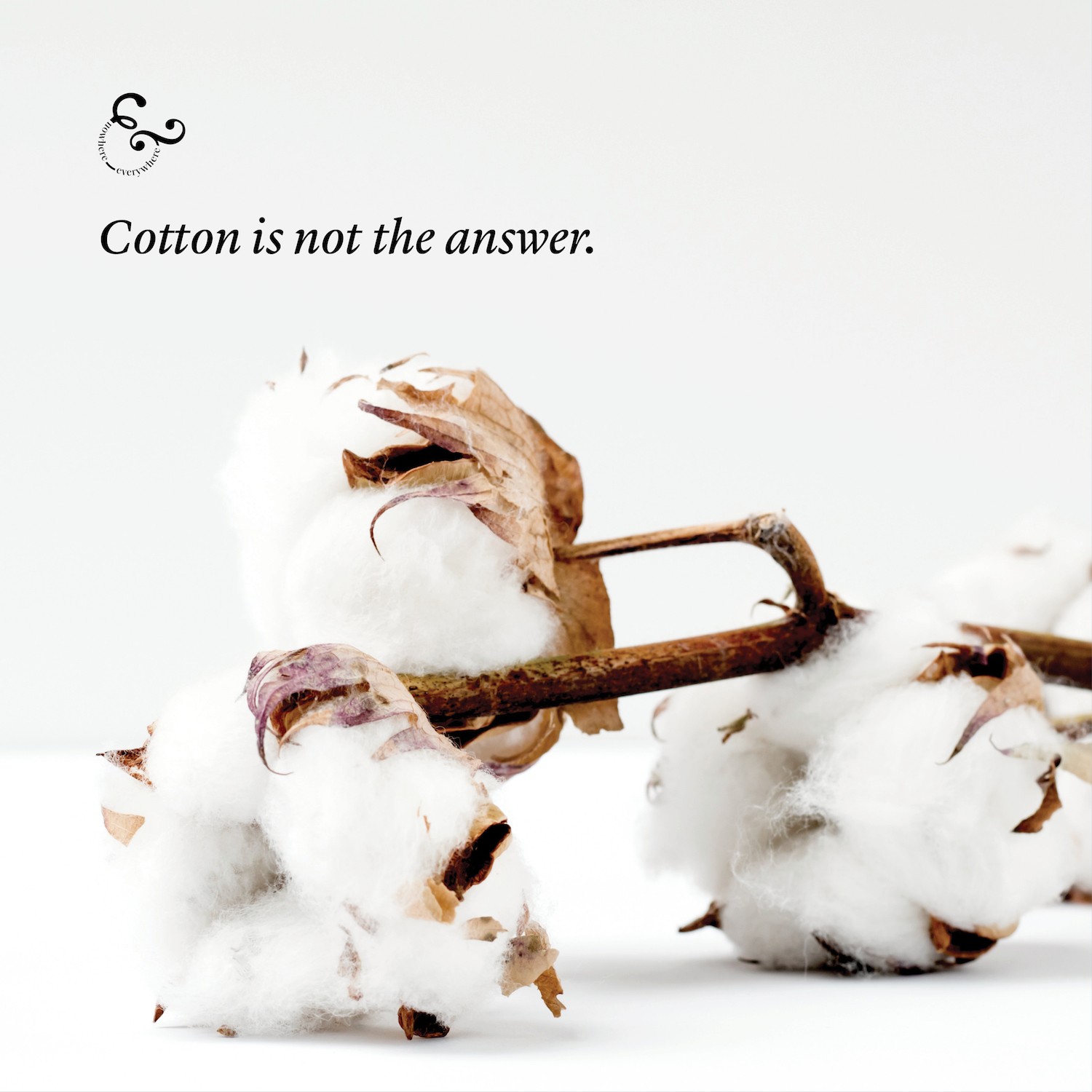We try to avoid cotton as much as possible in our products. There are reasons for this. Please know though that this is just another area of consuming that is extremely complex. We have 100% cotton clothes ourselves instead of polyester. Cotton can also be a great crop and really useful. No area of environmentalism is straightforward – we built a very complex world around us.
1. Numerous studies have shown that cotton doesn’t always stack up to a plastic alternative, outside of litter. Last year the Denmark Ministry of Environment concluded the same as other studies, that you would need to use a cotton tote thousands of times to have the same cumulative environmental impact as 1 plastic bag (used a second time as a bin liner). The organic tote version would need many more thousand uses. Up to 20,000 in fact. The numbers are staggering. This doesn’t mean we advocate for plastic bags; not at all! We’d like to recommend timeless, useful hemp and linen totes and use them as long as possible.
2. Growing evidence contests whether organic cotton is better for the environment overall than conventional. This largely comes down to crop yields (conventional has been modified so organic requires much more land & water). Some sources say that over time this evens out due to soil health but there isn’t strong evidence for this in the daily industry. More studies show that adjusting for less fertilizer & pesticide use in organic, conventional cotton still had less impact. But on the other side, there are carcinogens. And Monsanto. And lack of seed saving. Organic feels good because it’s more natural, but at that scale it’s really impactful. It feels hopeless either way at times.
3. Water irrigation for cotton is extremely high and often mismanaged. It impacts drought torn areas that grow cotton like India and Australia (see the Darling River fiasco killing everything off).
4. Unless your garment is certified with GOTS it’s likely the dying process ruined every bit of the organic credentials.
5. There are better fabrics. Hemp is wonderful. Flax is great. Recycled (not using virgin material) is brilliant. Banana fabric uses waste by-product. Many more options are entering the market. Provided they don’t use harsh chemicals during the process, they may be better.
6. Most companies have no idea where their cotton was grown, if it was ethical or the impact it is having on that region. According to US Dept of Labour, cotton is commonly produced using forced labor from 9 countries producing 65% of our cotton – Benin, Burkina Faso, China, India, Kazakhstan, Pakistan, Tajikistan, Uzbekistan, and Turkmenistan.


